Laser Dazzlers For Defending Tanks Against Marauding Drones Are An Untapped Countermeasure
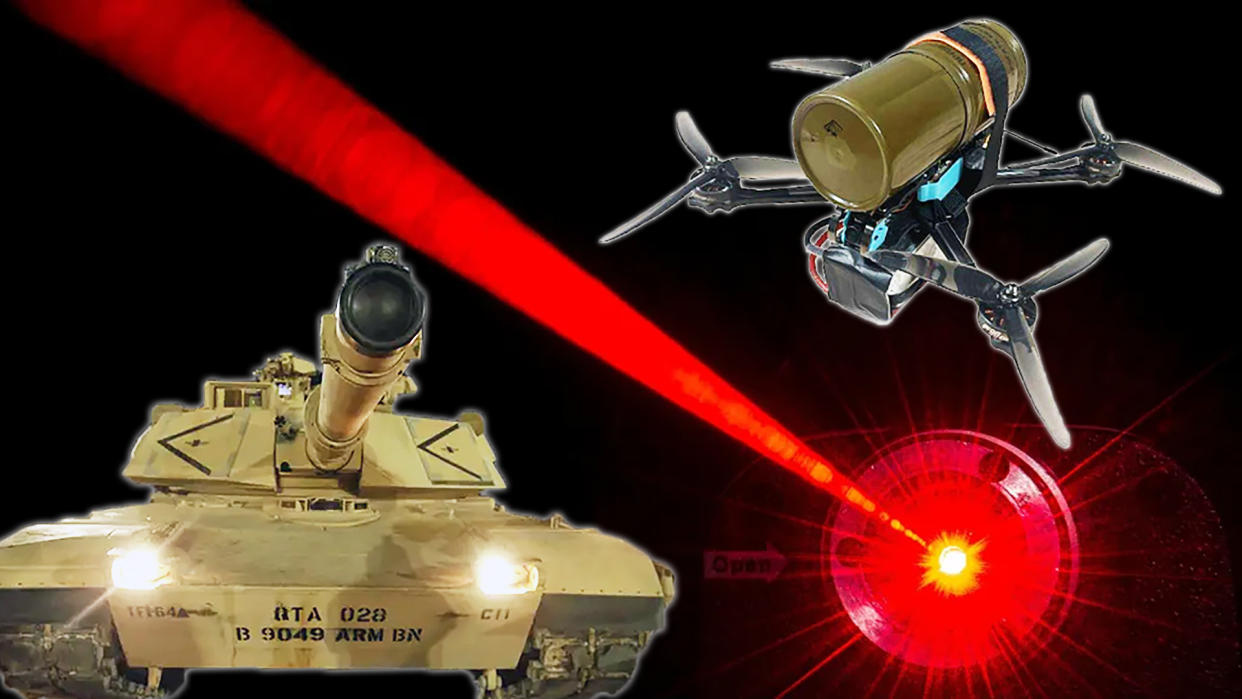
Thanks in large part to the conflict in Ukraine, the now long-standing threat that drones, especially highly maneuverable first-person view (FPV) kamikaze types, pose to tanks and other armored vehicles has fully emerged. The rush is now on to add counter-drone defenses – everything from extra guns to electronic warfare jammers, and more – to existing and future designs. The War Zone has previously laid out a detailed case for how hard-kill active protection systems could gain an added capability to provide another layer of protection against uncrewed aerial threats. But there is another option that nobody seems to talk about, one that would have unlimited ‘magazine depth’ and would be very cost-effective. This would be to equip armored vehicles with advanced laser dazzlers to blind optical sensors on lower-end drones, denying them the chance to make their highly precise and deadly attacks.
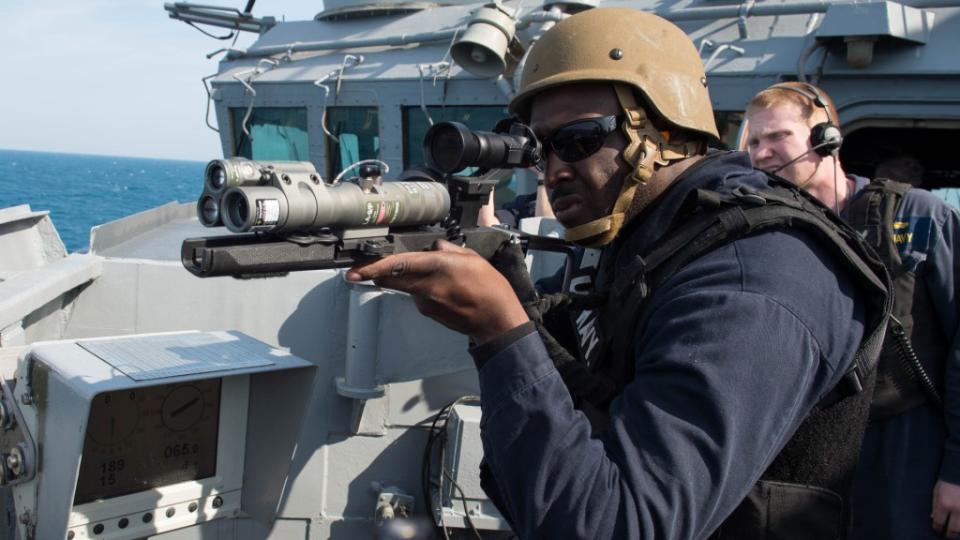
As generally defined, dazzlers are lower-powered lasers designed to have temporary, non-destructive, and reversible effects, unlike high-power laser directed energy weapons. In 1995, an additional protocol was added to the Convention on Certain Conventional Weapons prohibiting signatories, including the United States, from employing “laser weapons specifically designed, as their sole combat function or as one of their combat functions, to cause permanent blindness to unenhanced vision, that is to the naked eye or to the eye with corrective eyesight devices.” The protocol also notes “blinding as an incidental or collateral effect of the legitimate military employment of laser systems, including laser systems used against optical equipment, is not covered by the prohibition,” but admonishes parties to take all feasible precautions to prevent this.
As such, various tiers of laser dazzlers are in active military use today, including across the U.S. armed forces, such as the man-portable rifle-like LA-9/P and the ship-mounted Optical Dazzling Interdictor, Navy (ODIN). Many larger designs like ODIN have a stated counter-drone capability already.
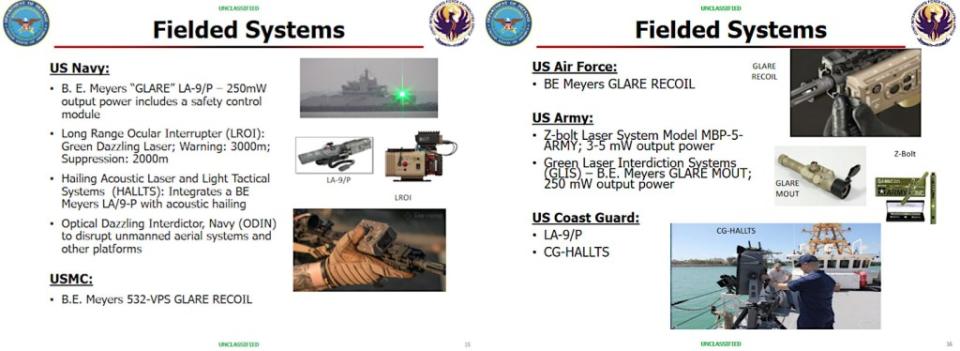
Commercial drones and uncrewed aerial systems produced specifically for military use alike typically use some combination of electro-optical and/or infrared cameras to help with navigation and, in the case of weaponized designs, targeting. The operators of the FPV-type kamikaze drones designed to smash into their targets and detonate, as well as ones configured to drop munitions from above, that are in daily use on both sides of the battlefield in Ukraine, rely solely on those cameras to execute attacks, as can be seen below.
A Ukrainian FPV kamikaze drone gracefully lands in the open hatch of a Russian tank. https://t.co/u0ER6mUuiK pic.twitter.com/tAjxwXboGX
— Special Kherson Cat
(@bayraktar_1love) March 30, 2023
A Ukrainian drone from the 79th Air Assault Brigade drops a 40mm HEDP grenade on a Russian UR-77 Meteorit, causing a catastrophic payload explosion. pic.twitter.com/SsaQCKXsNL
— OSINTtechnical (@Osinttechnical) August 14, 2023
In turn, fully disrupting a drone operator’s video feed, or even just heavily degrading it, can negate their effectiveness. FPV drones, in particular, can be moving so fast that just a brief loss of situational awareness can lead to them going well off course and/or crashing as a result. This is especially true when making their terminal attack runs. This has already been observed when it comes to the use of radio-frequency jamming to disrupt camera feeds and control links between drones and their controllers.
Russian electronics warfare jamming system saves lives.
Intercepted video feed from Ukrainian FPV drone trying to attack a Russian soldier on an ATV. But jamming equipment makes the Ukrainian operator lose control in the final moments, and the drone flies off into a tree instead pic.twitter.com/GCOqLxuP5a— Fennec_Radar (@RadarFennec) May 31, 2024
In addition, whether a drone is armed or not, being able to blind its cameras impedes its ability to perform reconnaissance and surveillance tasks. As The War Zone wrote back in 2019 after protesters in Chile were spotted using laser pointers against a drone:
“Just blinding their optics and thus eliminating their reason for being overhead—to capture video for various reasons—could be enough to deter some of them from flying in the first place. Tying in a few dazzlers dispersed around a large area into a counter-drone system with detection capabilities could make flying one over a denied area entirely useless in the first place.”
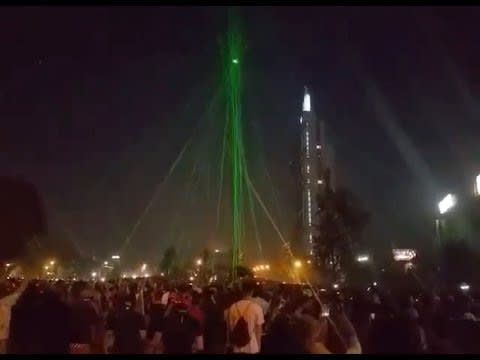
Many commercial drones also use optical and/or infrared sensors to help determine their general position, remain stable, and otherwise stay safely aloft. As such, blinding those sensors might be able to actually bring down certain uncrewed aerial threats. There are often built-in fail-safes, but these are generally designed to prompt the drone to automatically return to its operator or another known location, which would still cause a complete disruption of any attack or other malign activity.
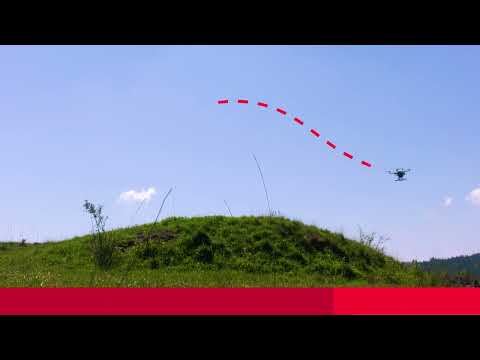
Lasers, as a rule, are sensitive to environmental factors, such as smoke, clouds, rain, or other particles in the air, which can break up a beam and reduce its effectiveness. The power of that beam drops as it propagates through the atmosphere and gets further away from the source, too. For a laser dazzler used for point defense against nearby marauding drones by blinding their optics when looking in the direction of the emitter, these factors would be less of a concern. As was seen years ago in Chile, commercially available hand-held laser pointers have proven to be powerful enough to have disruptive impacts on smaller uncrewed aerial systems, at least at very close ranges.
A purpose-built and powerful counter-drone laser dazzler for vehicular use would still be relatively compact and otherwise easy to integrate. Multiple laser dazzlers arrayed around a vehicle or mounted in turrets with wide fields of regard could further increase the effectiveness of such a defensive installation against simultaneous aerial attacks.
Laser turret assemblies and tracking gear used defensively on aircraft could be a useful starting place for developing such a system. Leveraging existing directional infrared countermeasures (DIRCM) technology already in use on airborne platforms, which employ miniature turreted lasers to blind the seekers on incoming infrared-homing missiles via precisely tracking and firing a modulated beam at their seekers, could be a great option. These laser pointer assemblies would have to evolve to be able to direct lasers designed to counter systems in the visual and ideally the infrared spectrum.
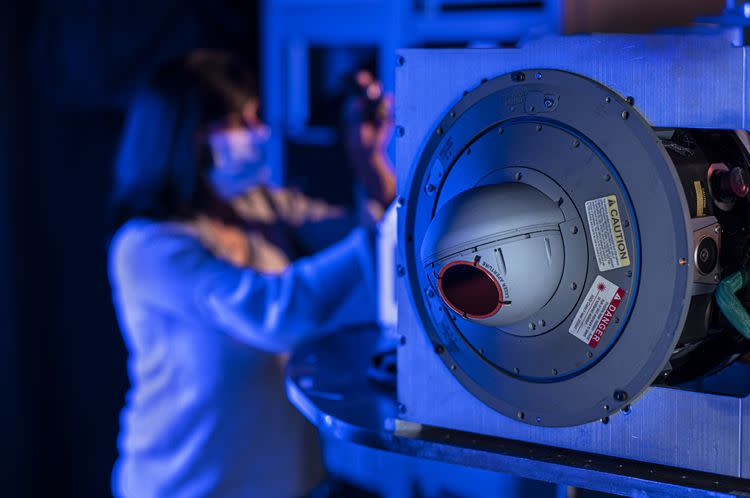
DIRCM systems detect an incoming missile using staring multi-band electro-optical assemblies scattered around the aircraft and then direct the laser turret to engage the seekers of incoming threats. This could potentially be adapted for ground use with drones, but other sensor systems, including radars, could also be used for warning and cueing.
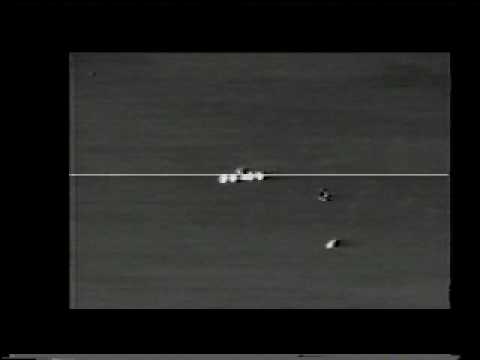
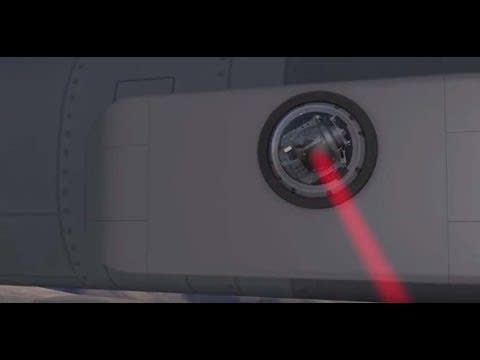
The idea of adding dazzler-like systems to armored vehicles is not really new, although they were far less capable or directional in nature than the kinds we are describing in this piece. The Soviet Union developed a defensive system called Shtora-1 in the 1980s that was subsequently fitted to T-80 and T-90-series tanks, and was offered as an option for other vehicles. Shtora-1 prominently featured a pair of emitters designed to pump out pulsed infrared light primarily to disrupt laser designators and laser rangefinders used in conjunction with semi-automatic command to line-of-sight (SACLOS) anti-tank guided missiles. These infrared ‘dazzlers’ have steadily fallen out of use in the Russian armed forces, though they remain in service elsewhere. It’s possible that new, advanced, and highly directional drone dazzlers could also be used to disrupt certain guided missiles, as well as drones.
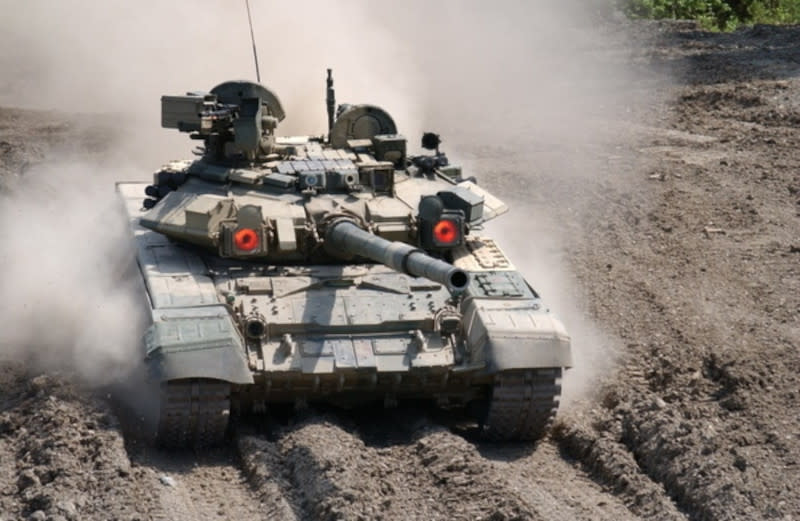
#Ukraine: A very rare Russian T-80UK tank is still successfully used by the 93rd Mechanized Brigade of Ukraine after being captured 4 months ago.
T-80UK is a commander version of T-80U which has a Shtora-1 APS, thermal sight and navigation system installed. pic.twitter.com/sHtL2yj45T—
Ukraine Weapons Tracker (@UAWeapons) July 14, 2022
BAE Systems currently offers a vehicle-mounted DIRCM system called Terra Raven to provide soft-kill protection, primarily against incoming anti-tank guided missiles. However, company market material, as seen below, indicates that the system could be used against drones, as well.
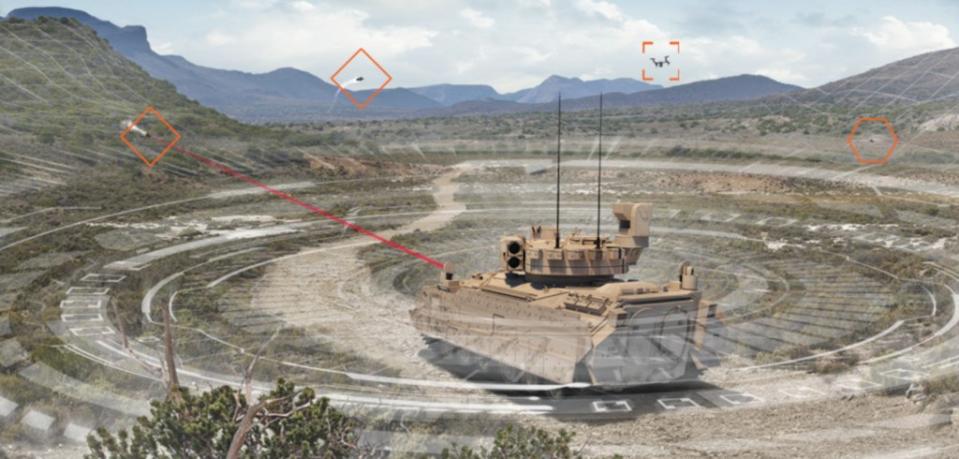
Australia-headquartered Electro Optic Systems (EOS) is also now offering dazzlers as an add-on counter-drone option to some of its existing portfolio of remote weapon systems (RWS) like the Slinger and R800. “The Laser Dazzler… successfully showcased its ability to degrade, deny, and destroy the electro-optical sensors on typical UAS [uncrewed aerial systems], using a non-lethal, zero-collateral laser,” according to a press release EOS put out just yesterday regarding a test of Slinger equipped with this additional capability.
“Laser light, being a single wavelength and coherent, travels far in a vacuum but disperses over distance in the atmosphere. The Laser Dazzler features bespoke beam-forming and optics engineered to achieve the necessary power density at operational ranges, tailored to specific tactical requirements,” that release added. A picture that EOS released, seen below, which is said to show a “dazzled” drone suggests that the company’s laser may also be higher-powered, or at least capable of operating in a more destructive mode, than what is typically considered a dazzler.
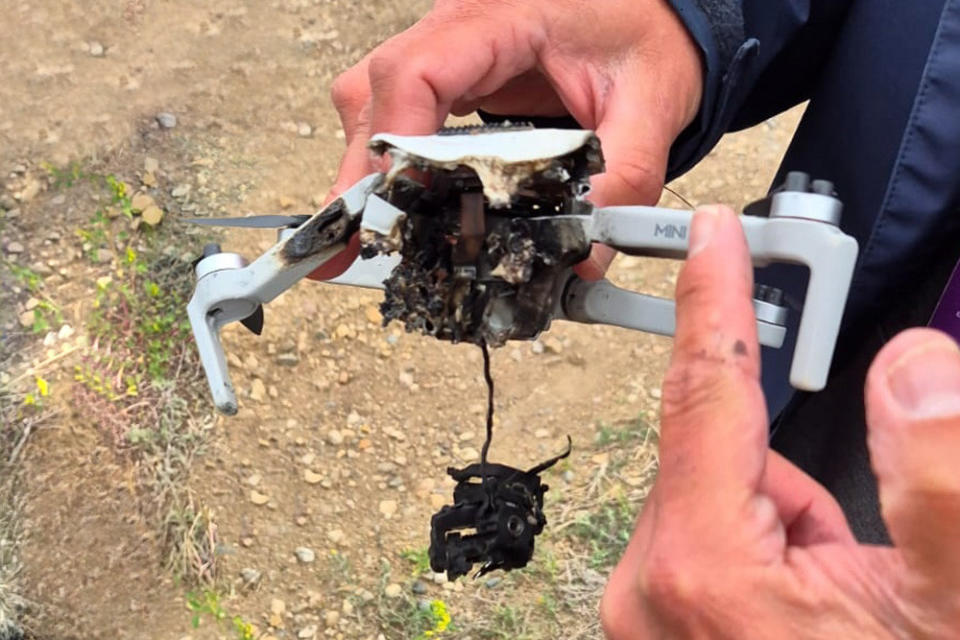
In addition, EOS’s offerings are also self-contained turreted weapon systems that might not be as readily integrable onto a particular tank or other armored vehicle as a platform-agnostic distributed dazzler array. Such an array might be easier to combine with other existing self-protection capabilities on a particular platform, as well.
For instance, small radars tied to existing hard-kill active protection systems or other 360-degree sensor arrays, like missile approach warning sensors typically used in conjunction with aircraft DIRCM systems, could also be used to cue the laser dazzlers to incoming threats.
There is also the move to bring augmented reality ‘x-ray’ vision to armored vehicles, by which crews can wear helmet-mounted displays (HMD) to see through the vehicle’s hull, including at night. Cameras arrayed around the vehicle provide a ‘stitched’ spherical video feed very similar to how the F-35’s Distributed Aperture System (DAS) works. Like DAS, such a system can also provide targeting information and alert crews to anomalies, threats, or items of interest. Locations of friendly forces and other data-linked info can also be superimposed on the user’s HMD to greatly enhance situational awareness.
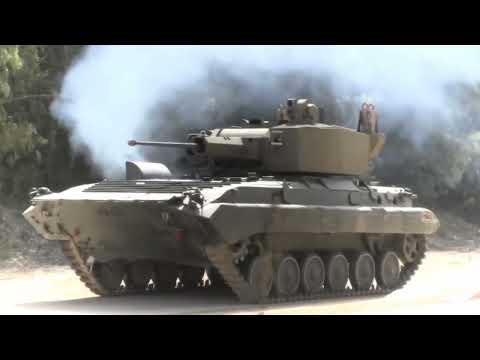
Melding both x-ray vision for crews and threat warning systems via a single set of distributed sensor arrays is already in the works for less complex platforms than the F-35. Such a system has been test-flown on the V-280 Valor tilt-rotor aircraft, for instance. The reverse is also happening, taking existing threat warning systems and giving crews X-ray vision capabilities. Merging these capabilities and timing them into countermeasure systems, like laser dazzlers, seems like a very attractive option for armored platforms.
Integrating a counter-drone laser dazzler system could be further aided by the use of an open-architecture system to control all of a vehicle’s defensive capabilities, and potentially other functions. As of at least 2018, Lockheed Martin had been working to develop this exact kind of control architecture for the U.S. Army as part of a program called Modular Active Protection Systems (MAPS).
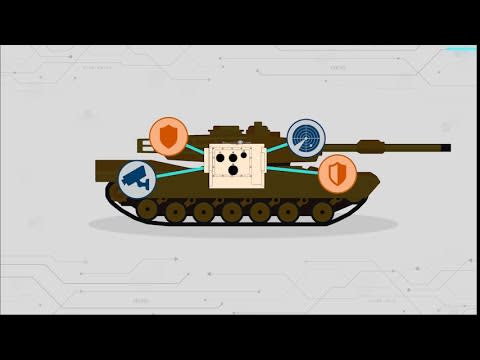
With this in mind, it’s important to stress that counter-drone laser dazzler would work best as part of a broader layered array of defensive systems. Electronic warfare jammers, hard-kill active protection systems, high-power laser and microwave directed energy weapons, and traditional guns are all likely to be part of the equation when it comes to protecting tanks and other heavy armored vehicles from uncrewed aerial threats going forward. It’s also worth noting that increasing advances in autonomous technologies driven by related developments in artificial intelligence and machine learning will present challenges for some counter-drone systems.
The potential for dazzlers to help provide another anti-drone defense for tanks and other armored vehicles also raises the possibility of these being used in other contexts on the ground, including by infantry units. The U.S. Marine Corps recently put out a call for information about various possible counter-drone capabilities that individuals could carry, potentially attached to their existing service weapons. Dazzlers small enough to be fitted to standard rifles and carbines are already in U.S. military service as non-lethal systems to signal to, dissuade, or disorient potentially threatening individuals.
The B.E. Meyers Glare Recoil shown in the video below is an example of a laser dazzler capable of being attached to standard infantry small arms that is in U.S. military inventory now.
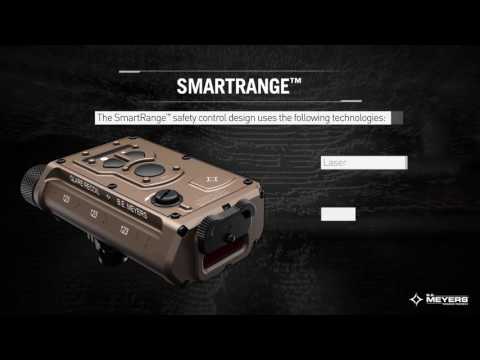
Laser dazzler and other future counter-drone capabilities will also be part of larger and more traditional short-range air defense (SHORAD) umbrellas that will have to keep up and maneuver with armored formations. In recent years, there has been a global resurgence of interest in dedicated short-range air defense systems to help protect ground forces broadly from drones, as well as other aerial threats, again at least partially spurred largely by observations of the conflict in Ukraine. Countering drones with a hard-kill SHORAD overlay will also be a key component for defending against these systems.
But, perfect is the enemy of the good, and laser dazzlers, especially automated ones, could provide a rapidly deployable, relatively affordable solution for countering the most predatory of lower-end unmanned systems. They could also help provide a defense against anti-tank weapons that use infrared and optical seekers, on top of it. So, they seem to be the lowest-hanging fruit, and one that has been left unpicked, when it comes to dealing with this massive and quickly developing threat.
Contact the author: joe@twz.com and tyler@thedrive.com



